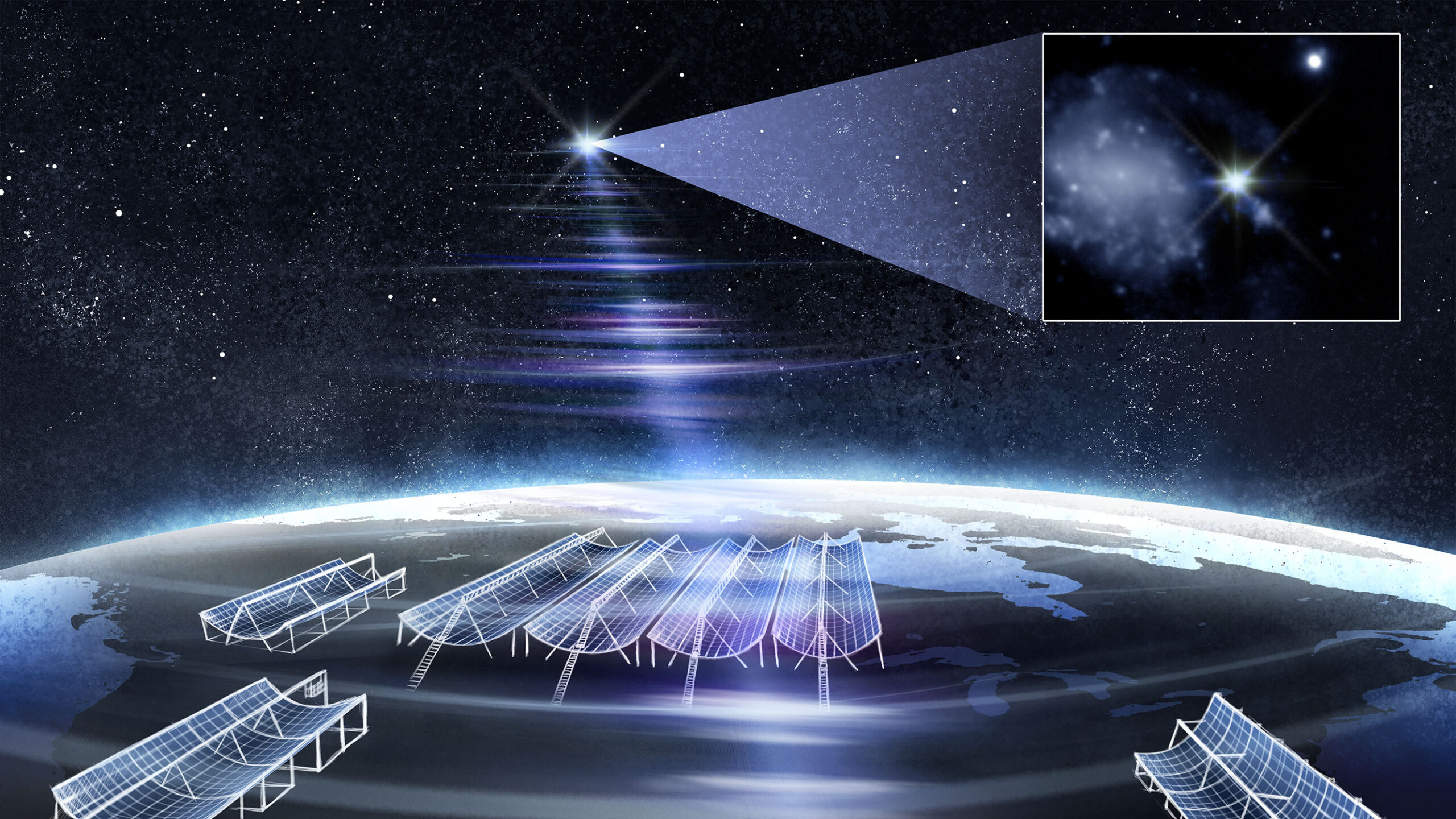
An international team of scientists, including Northwestern University astrophysicists, has spotted one of the brightest fast radio bursts (FRBs) ever recorded — and pinpointed its location with unprecedented precision.
The millisecond-long blast — nicknamed RBFLOAT (short for “radio-brightest flash of all time” and, yes, a nod to “root beer float”) — was discovered by the Canadian Hydrogen Intensity Mapping Experiment (CHIME) and its newly completed “Outrigger” array. By combining observations from sites in British Columbia, West Virginia and California, scientists traced the burst to a single spiral arm of a galaxy 130 million light-years away — accurate within just 42 light-years.
Because they occur so far away and vanish within the blink of an eye, FRBs are notoriously difficult to study. If scientists can pinpoint an FRB’s exact location, however, they can explore its environment, including characteristics of its home galaxy, distance from Earth and potentially even its cause. Eventually, this information could help shed light on the nature and origins of these mysterious, fleeting bursts.
The study will be published on Thursday (Aug. 21) in The Astrophysical Journal Letters. It marks the first time the full Outrigger array was used to localize an FRB.
Read full Northwestern Now story.
Media Coverage:
CNN
Yahoo News
Mashable
Wired
Gizmodo

